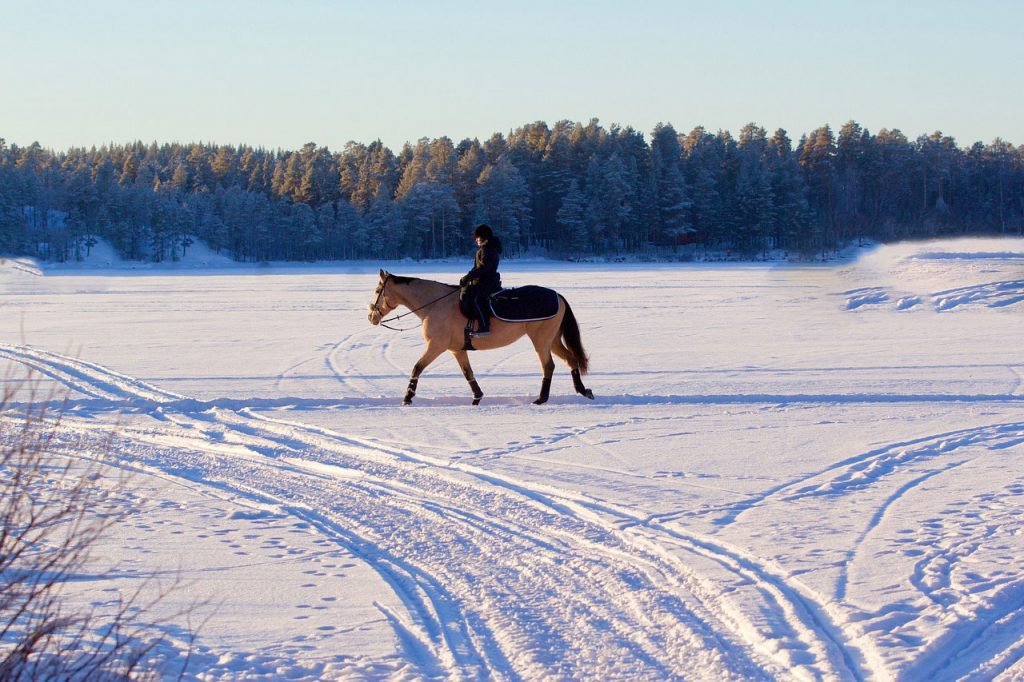I suppose, for many of us, the allure of horse riding is one of those passions that stays ignited during the warmer months. Whether embarking on a majestic trail adventure or a quiet countryside amble, there’s something magical about connecting with nature on horseback.

Image: yourhorsefarm.com
Understanding the Cold Weather Threshold
But as winter’s icy embrace envelops the landscape, the question arises: how cold is too cold to ride a horse? Exploring these temperature considerations is crucial for ensuring the well-being of both horse and rider.
Horses are remarkably resilient creatures, adapted to withstand a wide range of temperatures. However, when the mercury dips below certain levels, it’s essential to proceed with caution. Too much cold can lead to health issues for horses, such as hypothermia, respiratory problems, and laminitis. Therefore, it’s vital to assess the temperature and wind chill factor before deciding whether a ride is advisable.
Generally speaking, most experts agree that it’s best to avoid riding when the temperature drops below freezing (0°C or 32°F). At these temperatures, horses are at increased risk of hypothermia, especially if they’re not properly protected. It’s worth noting that wind chill can also significantly lower the effective temperature, so it’s crucial to factor this into your decision.
Riding at Sub-Freezing Temperatures
If the temperature falls below freezing but remains above -10°C (14°F), it’s possible to ride with extreme caution. However, several precautions must be taken to ensure the safety of both horse and rider.
Firstly, the horse should be well-protected with a warm blanket and a hood to cover its ears and muzzle. The rider should also dress appropriately with insulating layers, a hat, and gloves. Additionally, it’s wise to limit the riding time to short intervals, ensuring that the horse is checked regularly for signs of discomfort such as shivering or reluctance to move.
Once the temperature drops below -10°C (14°F), it’s strongly advised to refrain from riding. At these temperatures, the risk of hypothermia becomes too great, and pushing the limits could have dire consequences for the horse’s health.
Expert Insights and Tips
Beyond temperature considerations, listening to your horse’s body language and adapting your riding style to the conditions is crucial. Signs of discomfort, such as clamped nostrils, tense muscles, or overall sluggishness, should be heeded promptly. It’s also important to reduce speed and avoid strenuous activity when riding in cold temperatures.
Additional tips for riding in cold weather include using a saddle pad with a warm fleece lining to provide extra insulation for the horse. Additionally, offering a warm electrolyte solution to the horse after riding helps replace lost fluids and salts.

Image: functionalhorsemanship.blogspot.com
FAQs on Riding in Cold Temperatures
Q: Can horses get frostbite?
A: Yes, horses can get frostbite on exposed areas such as their ears, muzzle, and legs. It’s essential to protect these areas with a blanket, hood, and boots when riding in cold temperatures.
Q: How do I know if my horse is too cold?
A: Signs that your horse may be too cold include shivering, tense muscles, reluctance to move, clamped nostrils, and a dull appearance. If you notice any of these signs, it’s crucial to warm your horse up immediately and consider ending the ride.
Q: What temperature is too cold for grooming?
A: It’s generally best to avoid grooming horses when the temperature drops below -5°C (23°F). At these temperatures, the horse’s coat can become brittle and prone to breakage during grooming.
Q: Can horses drink cold water in winter?
A: Horses can drink cold water in the winter, but offering lukewarm water is generally better for their well-being. Cold water can be harder for horses to digest, especially if they’re not used to it.
How Cold Is Too Cold To Ride A Horse
Conclusion
Understanding how cold is too cold to ride a horse is paramount for ensuring the safety and well-being of your equine companion. By carefully assessing the temperature and wind chill factor, taking appropriate precautions, and being attentive to your horse’s body language, you can enjoy memorable horseback riding experiences even during the colder months.
Whether you’re a seasoned rider or just starting, remember that the safety and comfort of your horse should always come first. With a little extra planning and care, you and your horse can create lasting winter memories.
Now that you have this information, I would love to hear your take on this topic. Let me know if you have any further questions or thoughts by leaving a comment below.